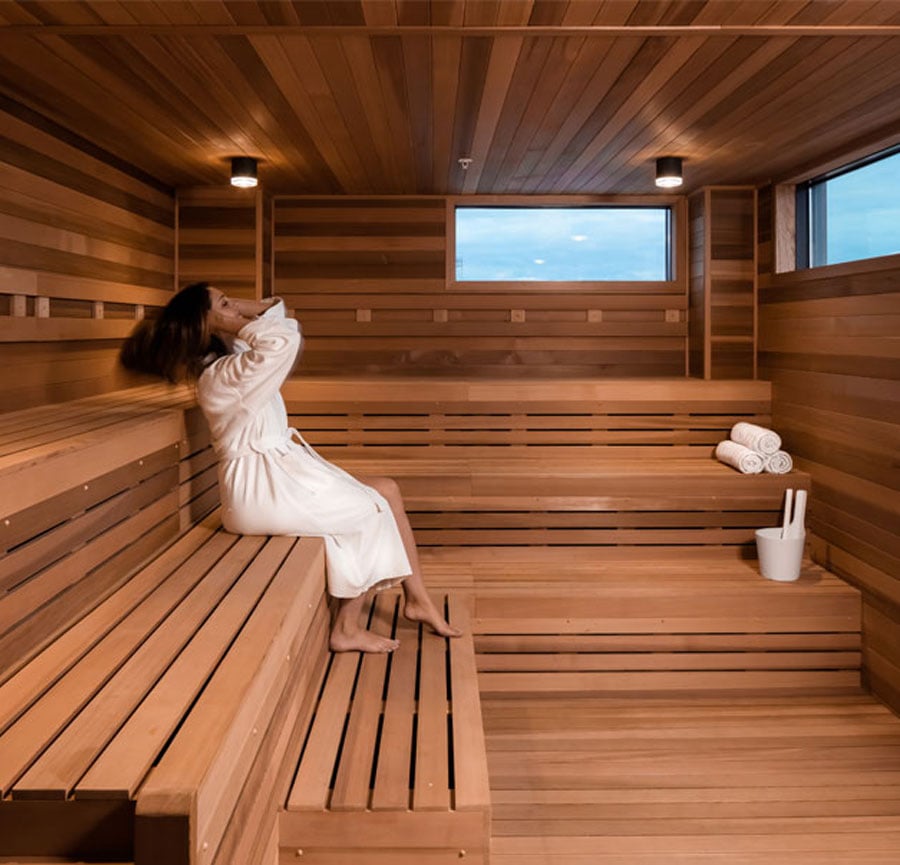Getting The Traditional Sauna To Work
Wiki Article
Traditional Sauna for Beginners
Table of ContentsAll About Traditional SaunaThe Basic Principles Of Traditional Sauna All About Traditional Sauna9 Easy Facts About Traditional Sauna ExplainedNot known Facts About Traditional Sauna
The majority of the weight lost in a sauna is water loss and is re-gained upon rehydrating. Without an uncertainty sauna can be an essential part of a healthy weight loss program. To look at the differences in between typical and IR saunas, I will separate these right into proven, academic, and fabricated differences.Therefore, the hottest factor in the saunawhich is at the ceiling directly above the sauna heateris typically between 185 and 190 F. Claims that a traditional sauna surpasses 200 F is just not real and not relevant for electric saunas sold in the US. The temperature level for a far-infrared sauna is usually established between 120 and 140 F; nevertheless, unlike the typical sauna, the objective in and IR area is not to accomplish a heat.
Because of this, the temperature level distinction is almost unimportant, since extreme sweating leads to both sauna types, but the technique of heating the body is different. In an IR sauna the bather will certainly really feel warm and will sweat profusely, yet at much lower temperatures. Traditional Sauna. Hence, if the goal is to invest longer amount of times in the sauna, the IR sauna is an excellent selection

What Does Traditional Sauna Do?

When the high temperature is achieved, the aspects cycle on and off to maintain the high temperature. Traditional Sauna. Most standard sauna individuals appreciate putting water over the rocks to produce vapor to raise sauna humidity degrees. The benefits of putting water over the rocks consist of: making the space extra comfy, moistening the nasal flows, and allowing the usage of aromatherapy by blending vital oils with the water
In a far-infrared sauna, the warmth waves penetrate the body to effectively heat the body and increase the body core temperature. To accomplish this enhanced temperature level, Far-infrared emitters create infrared energy which is close to the very same wavelength as that which the body naturally emitsoften described as the "Crucial Array" of 7 to 14 microns), so the energy is well received by the body.
When the energy enters the body, it causes the body temperature to increase and ultimately leads to sweating. In an infrared sauna it is very important for the emitters/heaters to stay on practically regularly. Considering that there is no mass of rocks to preserve warm, the sauna will cool if the emitters shut down.
Rumored Buzz on Traditional Sauna
As pointed out above, the sauna bather in an infrared room desires to position himself in front of operating emitters to get optimal gain from the warm. The heating time for the two areas can be really different, relying on exactly how the spaces are used. For a typical sauna, a bather should enable 30-40 mins for the space to achieve a wanted temperature level and to properly pre-heat the rocks.A well built sauna will normally accomplish a temperature level of 150-160 F in about 30-40 minutes. For hotter temperature levels, the room might require to heat for a longer period.

Traditional saunas tend to be larger (thus utilize more electrical power) than infrared saunas, although conventional saunas are certainly offered in one and two individual dimensions as well. For a two-person typical sauna, 5x6 or 5x7 dimension is most popular. The leading bench can pleasantly seat 2 or three people and is additionally enough time to lie down throughout view website the sauna session.
The Basic Principles Of Traditional Sauna
The average price per kWH of power in the U.S. is about $0.11 - Traditional Sauna, so a 4.5 kW heating unit will certainly cost around $.50 to run for one hour, if the heating unit runs continuously for one hour. Commonly a sauna heating unit will certainly compete 75% of the first hour and 50% of succeeding hours on given that the aspects cycle once the established temperature is achievedA two individual far-infrared area is typically literally smaller than a typical sauna, commonly about 4' x 4' or smaller. The IR home heating system my link is commonly 1.5-1.7 kW using a 120 volt 15 amp plug-in solution. Given that the room can be utilized earlier than a sauna space, we will certainly think the area is used for to of an hour including warmth up time.
There is a hardly ever discussed distinction in the social experience between the two rooms. While our culture has lost some of the social benefit of the standard sauna experience, it can be extremely socially fulfilling. From family time in the sauna, to heart-felt discussions with loved ones, to sauna partiesthe traditional sauna experience can result in intimate mingling.
Traditional Sauna Can Be Fun For Everyone
The majority of greater end infrared rooms consist of colored light treatment, sound systems and full-glass fronts.Report this wiki page